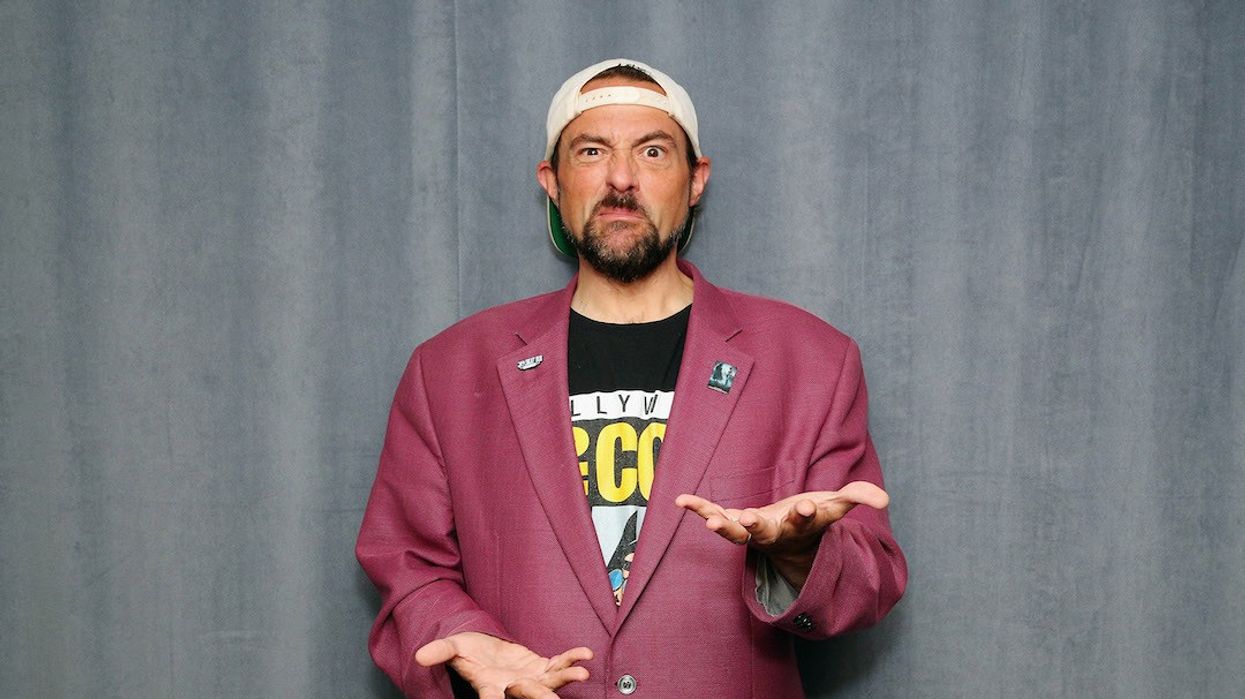What Can We Learn from Kevin Smith's Films?
In his strange cinematic universe, Kevin Smith has created some good (and some sorta bad) films that we can learn a thing or two from.

Let’s be honest: Kevin Smith is an important filmmaker.
He made a name off of his small independent films that were not very stylistic or experimental with the camera’s framing or movements, but he had the ability to capture a specific mood of a generation. Smith’s films were light on plot, about regular people hanging out, having long discussions about their obsession for the day, like comic books and the minutiae of Star Wars, and we loved it.
Patrick (H) Willems breaks down the good, the bad, and the ugly of Smith’s filmmaking career to figure out why we adore this particular creative mind. Predictability should never be the goal of a filmmaker, yet some say Smith has fallen back onto this safety net. But what made Smith’s films so intriguing in the first place?
Why did Clerks work?
Clerks is still a significant film in American independent cinema for good reason. With a budget of $27,000, financed by credit cards, Smith can capture a shared moment of a directionless limbo that young people in their 20s experience.
Like most of his films, Clerks is very simple with its direction, cinematography, and editing, but the lack of filmmaking experience is a feature. The bare-bones look and feel make Clerks feel like a documentary as we are just hanging out with these characters, and allows us to view the tragedy of the characters’ state of purgatory.
Smith often frames dialogue scenes in wide shots with the two characters placed next to each other, but the staging works in Clerks because it serves the story and makes the comedy play out better.

The problem with a stagnant camera
Once Smith started to get a bigger budget for his films, his lack of directing started to become more apparent and less provocative. Most of the time, Smith seems to have little idea what to do with the camera, so he drops in somewhere in the scene to film people speaking.
The camera’s lack of movement tends to feel artificial as the heightened dialogue is delivered in a staged-like way. The scenes start to feel like rehearsals that were edited together to create a coherent movie.
Keeping a camera still can add great gravity to a film’s story, but the film can start to feel amateur or cause disengagement when the camera is not moving with purpose.
Where Kevin Smith’s films work
The one place Smith’s films prosper is in his ability to create characters that feel like old friends that are dealing with real issues.
Clerks presented characters that were outliers and directionless, but Smith forced these characters to reconcile with the problems in their lives that are direct results of their actions. Although outdated by today’s standards, Chasing Amy allows queer characters to be more than a stereotype that mainstream films at the time portrayed, and tackles deeper issues attached to the complexities of love. His characters were their people, but also had interesting dynamics that challenged the character’s ideas.
Like Quentin Tarantino, Smith isn’t afraid to follow his character’s obsessions even if it does stray from the plot. Irony masks the pain, and the frankness of his characters' dialogue showcases their insecurities and flaws. It’s the characters that draw us into Smith’s films, and for a little while, we watch in silence as our friends realize their faults.

Taking a risk is what filmmaking is about. Once you start to rely on certain gimmicks, camera movements (or lack of movement), and visual choices that do not make sense for the scene, the work can begin to fall apart.
Even with their flaws, Smith’s films can teach us how to create well-written and relatable characters.
Do you have a favorite Kevin Smith film? Let us know which in the comments!
Source: Patrick (H) Willems











